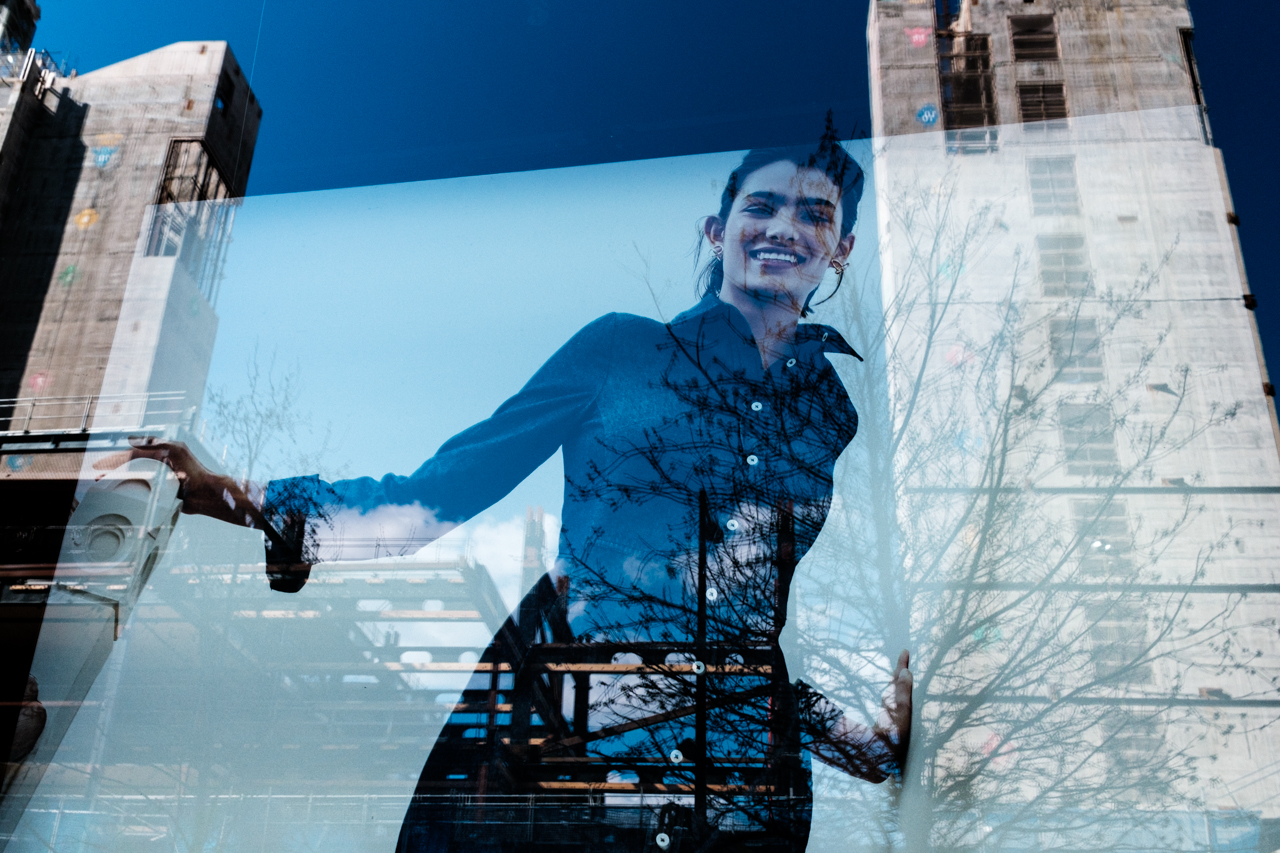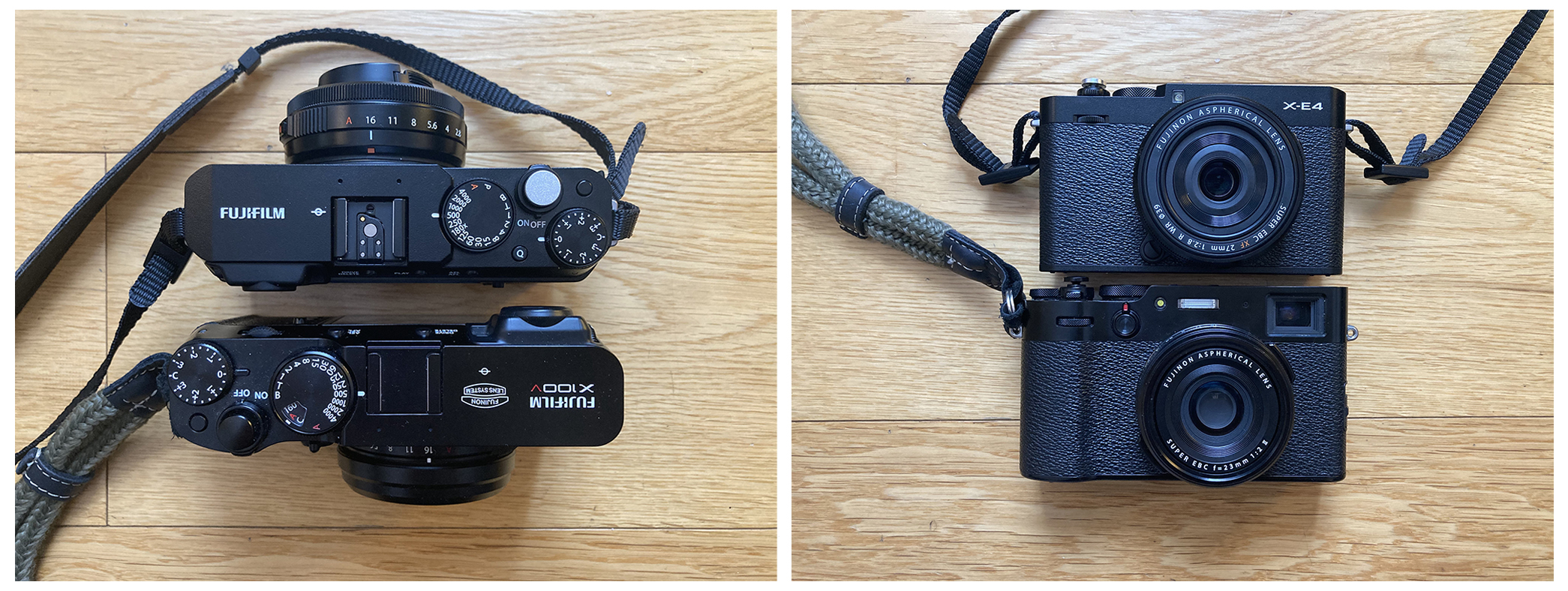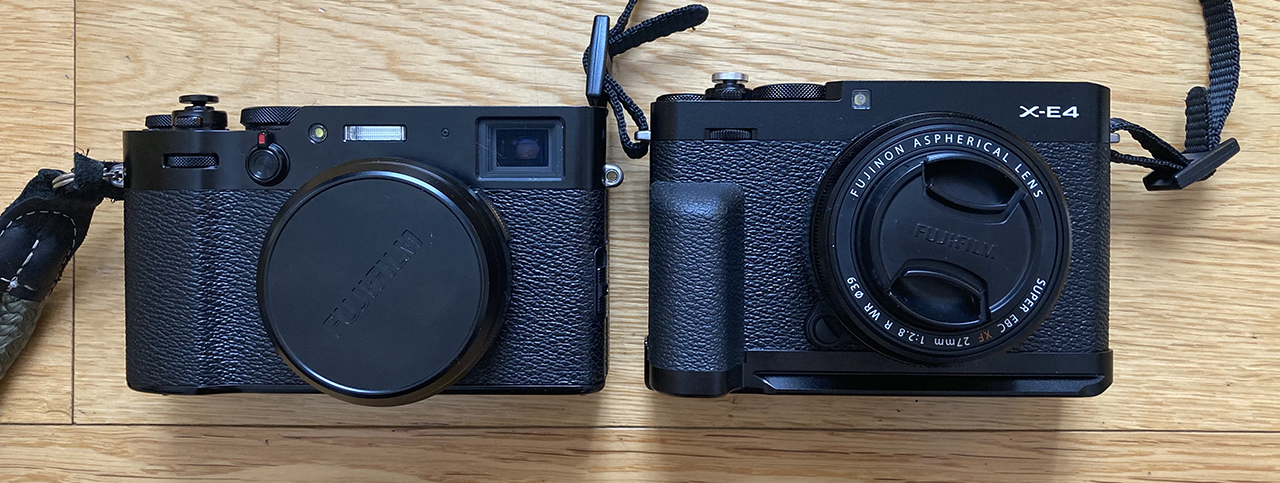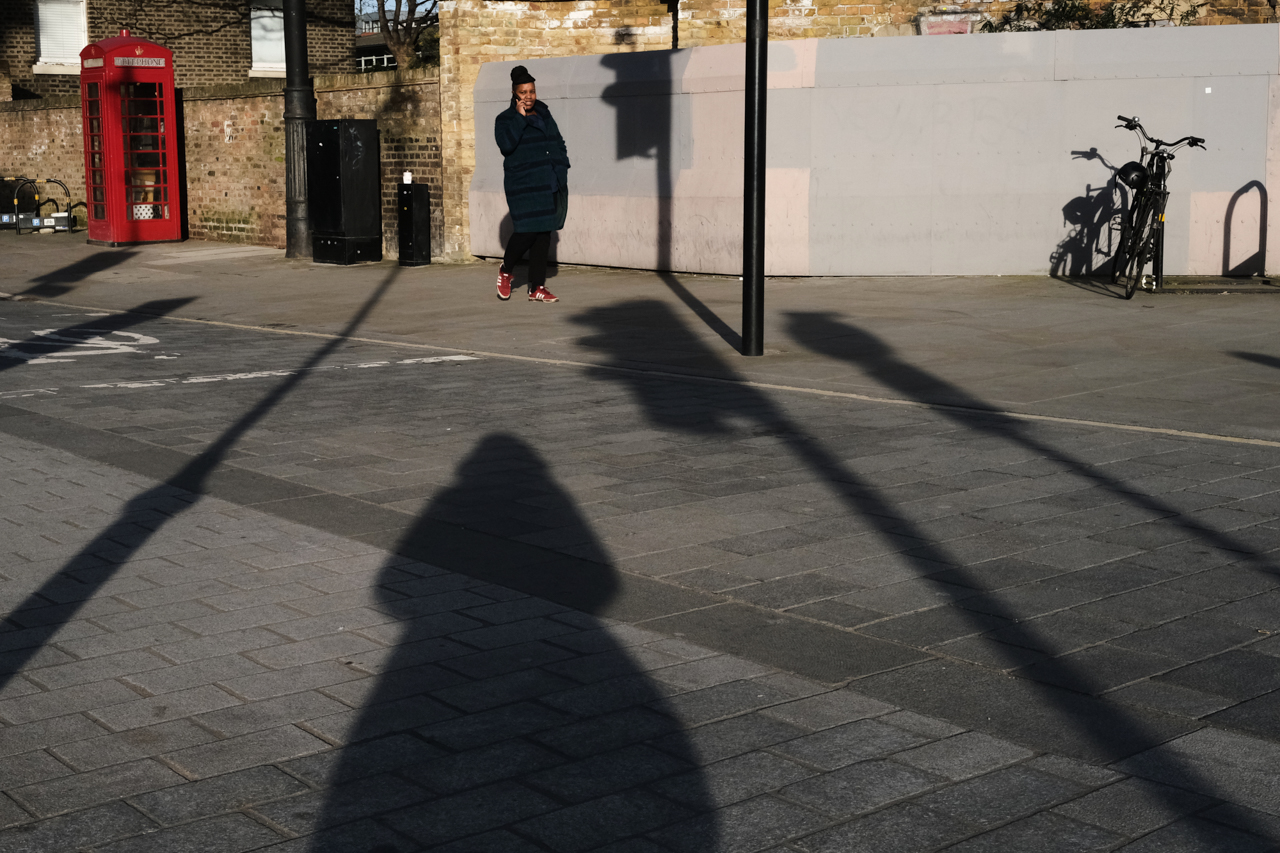The Perfect Street Photography Camera

Often photographers hear this: “That’s a great photo, what camera do you use?” Camera shmamera! Did anyone ask a Picasso what paintbrush he used? Does anyone ask a chef what pan they sauté their darn mushrooms in? No! Whatever camera you use is just a tool. It’s how you (yes, you there) see the world, what you observe and how you compose your observations that makes the photo. Mega pixels and brands have nothing to do with it!
Don’t get me wrong, different cameras suit different people, as there are difference in how big they are, how they feel in your hand, how easy they are to use, etc. You may be drawn to a particular brand or a particular type of camera but you can have the most expensive Leica and be the worst photographer.
My top tip when choosing a street photography camera when you are a ready, willing and able to make the investment is to go for something small, black, with a prime lens, and no loud branding on the neck-strap — in fact ditch the neck strap and get a wrist strap and wear your camera like a bracelet!
Same goes for lenses — keep ‘em small. If it’s long it’s wrong. You are a street photographer, you are photography people in public places, you are not on safari — the high street should not be confused with the Serengeti. Pick a prime, any prime, and stick to it, get used to it, understand it, and then you’ll know where you need to position yourself to get the frame you want. You gear will then become and extension of you. Starting with 50mm is good AKA “the nifty fifty”, and before you know it you’ll be hanging out with the 35mm kids (maybe, you don’t have to), or even the bold 23mm or 18mm posse. Whichever works for you! Just leave that telephoto at home — not only will you be making yourself instantly more visible, thereby attracting attention to yourself (not ideal when you are trying to make candid street photos). You’ll also waste precious moments deciding whether to zoom in a bit or zoom out a bit, and before you know it the moment is gone.
So after that very long and rambling introduction I’m going to dive into:
- Why you don’t need to invest in a “proper” camera
- The perfect camera for street photography (if you do want to invest!)

1. WHY YOU DON’T NEED TO INVEST IN A “PROPER” CAMERA
All you need to do street photography is something to capture an image with. You do not need an expensive DSLR or a mirrorless camera, or be shooting on film. Most of us have cameras on our smartphones these days, if you don’t you can pick up a disposable camera, or a cheap second hand “point and shoot”.
If you have only a few mega pixels who cares — make it your style! Take a look at the work of William Klein - He wasn’t concerned with things being in focus, his images were often shaky and grainy and underexposed. Then check out Daido Daido Moriyama, who was heavily influence by Klein and took the grittiness a step further. And don’t get me started on Robert Frank and his seminal work “The Americans" — which was initially criticised as “meaningless blur, grain, muddy exposures, drunken horizons, and general sloppiness.” Lean into the grit and the grain, and the roughness of this pictures. Use the limitations of whatever your image capturing device is as part of your style! And don’t let anyone camera shame you. Remember it’s only a tool. It doesn’t matter WHAT you make a picture with it matters HOW you see with your very own eyeballs connected to your one-of-a-kind brain. You can train this.
But it’s true that there’s something kinda nice about a sexy bit of kit in your hand…
2. THE PERFECT CAMERA FOR STREET PHOTOGRAPHY
I have narrowed it down to the Fujifilm X-E4 and the Fujifilm X100V… Let's compare these two bad boys of the Fujifilm X-Series camera pantheon. Remember though it's not the camera that makes good pictures, it's you…
"Don't be afraid to take bad pictures, because good pictures are the mistakes of bad pictures." — Gueorgui Pinhassov
I am the proud owner of a Fujifilm X100V, and since buying it I’d become convinced it was the perfect street photography camera — it’s small and therefore unobtrusive, you are limited to one focal length with the fixed 23mm lens (which means you get used to it, and you know where you need to be positioned to get the shot you want), and the settings can be adjusted quickly with external dials. So when the brand new Fujifilm X-E4 came along I wondered if my beloved X100V had found its nemesis; so I got one on loan from Fujifilm (a pre-production model) to see how they lined up against each other. Do I wish I had the X-E4, or am I happy to have the X100V? (obviously I want both!). To find out read on my friend, read on…

I’m going to approach comparing these two cameras from the point of view of a person who simply loves street photography, rather than someone who wants all the details of the tech, the market each are aimed at, and how they perform in different light conditions , etc. Let's face it, and deal with it, if you buy a Fujifilm camera you are getting quality and performance as standard!
If you're already familiar with the X-E3 and want to see how it's been upgraded head on over to the Fujilove website for a comparison between the X-E3 and X-E4 . And, instead of the usual gear review (not that I know if this is unusual or not as I don't read many of them!) I’m taking a kind of “innocent” point of view, and comparing across Fujifilm "families" of cameras. So this is a sort of anti-review review.
Anyway, here goes — my review is based on the following:
1. Look and Feel (size, colour, hand-feel, overall looks)
2. Performance (technology, LCD screen, ease of use)
3. A quick word about a lens
I will also throw in some links, a video, product snaps, and some photos taken by me on with the X-E4. Let’s dive in:
1. LOOK AND FEEL
Size: Does size matter? Not in the case of these two compact beauties it doesn't, they are both small and perfectly formed. And they are actually very similar in size, although the X-E4 looks as though it would be a lot smaller than the X100V, it is in fact only marginally smaller. It’s an optical illusion created by lens diameter to body ratio! The X100V body is less than a centimetre wider...

X-E4 (top) size comparison with X100V (bottom)
Colour: Both models come in a choice of all-black and silver with black. But colour is a very simple decision for me, as my preference is all-black all the way! While I love the retro vibe of silver with black, the all-black is in my opinion the best for street photography, simply because it’s not attracting any attention to itself like the little show off that the silver with black is! My first Fujifilm camera (XT10) was silver and black, and I had people approach me, and ask me whether it was a film camera, and shower it with complements, which meant I was nowhere near as invisible as I needed to be on the street.
Hand feel: I love how the X100V feels in my hand as it has a minimal moulded grip at the front that is just enough. The X-E4 is flat but you can buy it with an add-on hand grip (that screws into the bottom) and thumb rest (that slides into the hot shoe mount), so if you have bigger hands or have become used to shooting with a chunkier camera they are great accessories, and don’t really bulk out the camera meaning it’s still very compact. I didn’t need the add-ons, and didn’t actually notice that the X-E4 didn’t have any grip on it, as it felt very comfortable in my hand as it was.

Comparison with X100V and X-E4 with hand grip + lens caps
Overall looks: Let’s face it both are very handsome! There are some differences for me, which are of course entirely subjective and superficial, and those are that the fact that the X-E4 has a wider lens diameter than the X100V it does make it slightly less elegant looking. Added to that the X100V lens cap is very sexy as it’s a metal cover that suctions itself onto the lens with only embossed Fujifilm branding so it looks super sophisticated, and is very hard to lose! Lenses for the X-E4 will tend to have the old-school “pinch” plastic lens cap; so I guess it’s a little like day-wear versus evening-wear in lens cap terms!
2. PERFORMANCE
Technology: These cameras very similar once you get under the hood! They have the exact same sensor tech (23.5mm×15.6mm [APS-C] X-Trans CMOS 4 with primary colour filter). There are some differences, for example the X100V has a built in ND filter, and a weatherproof body (you do have to buy additional weatherproofing accessories for the lens though), and the X-E4 has one more film simulation than the X100V, but that’s not something that would have an impact on me as I tend to stick to one sim to ensure my work has a consistent look. So for a street photographer like me who just wants a camera that I can pick up, set up and shoot with easily, quickly and unobtrusively then there’s not really much to separate them.
If you are keen to find out more about the specs you can check out these links:
https://fujifilm-x.com/global/products/cameras/x-e4/specifications/
https://fujifilm-x.com/global/products/cameras/x100v/specifications/
LCD screen: This is where things get interesting! I love shooting with the flip screen on my X100V, as it means I don’t have to keep bringing the camera to my eye and alert people to what I’m doing. And it was one of the reasons I finally succumbed to the X100 series, as prior to the V there was no flip. The X-E4 also has a flip screen, which goes one step further though, and flips all the way around so that you can film yourself talking to camera or take selfies. The disadvantage I found to this very cool advantage was that if I tipped the screen too far up, the camera thought I was about to go all the way and flip into selfie mode, so it flipped itself, which meant the world was suddenly upside down — this added a whole new dimension to shooting! I guess though with practice you would learn how far you can angle the screen to keep it the right way up.
Ease of use: The main difference I noticed on the outside was that X-E4 doesn’t have the option to change ISO externally with a dial, unlike the X100V, which has a very cleverly designed integrated dial to make those adjustments. Otherwise the layout is similar enough, and the menus are pretty comprehensive, so once you are familiar with one Fujifilm camera you can easily make your way around another.
3. A QUICK WORD ABOUT A LENS:
Of course this is where it could be a deal breaker or a deal maker! As I already mentioned I am happy with one lens with one focal length for a street photography camera. There’s comfort in the familiarity of a focal length that you are used to. But, if you want to be able change your lenses then the X-E4 is perfect for you.

And for street photography I’d recommend the combo of Fujifilm X-E4 and Fujinon XF 27 mm F2.8 R WR, which is what I had on loan also to use with the X-E4 (not to be confused with the one without the aperture ring). They really are a dream team! I literally didn’t miss the focus once. My preference is for a deep depth of field and a fast shutter speed though... But still, I do have to give a massive shout out to that wee lens as it seems so much better than the old version, which I once owned. The fact it has an aperture ring makes it much easier and therefore more enjoyable to use, and to me it seemed a lot quieter and faster at focussing compared with the old one.
IN CONCLUSION
I have been using the X100V since 2020, and while I only had the opportunity to go out with the X-E4 for a couple of afternoons, it still felt like an old friend. So while my X100V and I were on a (very short) break, and I had a (very) brief affair with the X-E4, I conclude that for me the X100V remains my true love, so I have no regrets, but is that because I was already head over heels?
The Fujifilm X100V is small and oh so perfectly formed. It has a fixed 23mm prime lens (35mm full frame equivalent), has external dials so I can make exposure tweaks super easily, it has the option to set the shutter to silent, and it looks like a “point and shoot”, so no-one takes me seriously when I have it with me!
If I had neither, though, and had to decide now, and was faced with these two options, then the main things my choice would boil down would be: whether to go for the option of interchangeable lenses, and if I would used the flip screen to be able to take selfies. To be honest I'm glad I'm not faced with the decision!
The Fujifilm X-E4 is a fantastic little camera. If however you want a slightly more sophisticated little number that you stare at lovingly then join the X100 club with the Fujifilm X100V! I would definitely get the X-E4 as a back-up street photography camera though, 100%.
And in case you feel like doing a bit of shopping: Head HERE to the camera shop!
You can of course test drive any Fujifilm camera or lens through the Fujifilm loan scheme: https://www.fujifilm-loan.com/en-gb/ You can rent the kit for 48 hours for free, with free delivery and collection. (T&Cs apply)
Or you can go and play with them if you are in London at The House of Photography!
"Photography is the only language that can be understood anywhere in the world." - Bruno Barbey
Words and pictures © Polly Rusyn | All Rights Reserved






